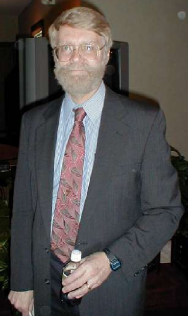What is Faith?

But without faith it is impossible to please him: for he that cometh to God must belief that he is, and that he is a rewarder of them that diligently seek him. Hebrews 11:6

But without faith it is impossible to please him: for he that cometh to God must belief that he is, and that he is a rewarder of them that diligently seek him. Hebrews 11:6
Good scientific theories are able to explain data and make testable predictions. For the Christian, a third element is required, that the theory be in harmony with the clear teachings of scripture. Some creation scientists even begin with scripture to formulate theories and hypotheses. In this essay, we will look at three predictions ultimately based on scripture, made by physicist Russell Humphreys of the Institute for Creation Research. The predictions deal with (1) the magnitude and dynamics of planetary magnetic fields, (2) the existence of a cosmic rotation axis, and (3) diffusion of helium through zircons. All of these predictions are in accord with a young earth interpretation of Genesis 1. As we will see, the data fit the predictions well.

D. Russell Humphreys, Ph.D.
Geological structures give considerable evidence about the sequence of events during the world-wide flood described in Genesis and also give evidence for the flood itself. These structures include the chalk deposits during the Cretaceous period, paleocurrents, which indicate the direction of water flow when fossils were deposited, coral formations, and others. Astronomical findings also give us information about the flood and its development.

Figure 1
For those who adhere to a literal interpretation of Genesis and believe in a young earth, scripture is the first, final, and unrivaled authority (sola scriptura) on the questions of the origin of the universe, the origin of life, the origin of man, and the age of the earth. Young Earth Creationists (sometimes referred to as “YECs”) believe that the Bible is inerrant and clear in its teachings about origins. Good exegesis based upon the grammatical-historical hermeneutical approach and comparing scripture with scripture leads to the conclusion that the earth was created in six 24-hour days in the recent past. Nature viewed through the lens of scripture lends support to the recent creation view.

Figure 1: Representation of Noah's Ark based on the Biblical description
The objective of this article is to help people gain a true understanding of Noah's Ark that will help their faith in God, our Creator, and help them bring faith to others as they share this message.